England’s very own Far East has a rich and varied heritage
 The fenland and broads of the East of England conceal within their mists a history that extends as far as Roman times. Here it was that Essex girl Boudica of the Iceni waged war against the Roman invaders and it was in the fenlands of Cambridgeshire and Norfolk that the Saxons of East Anglia fought the Danes.
The fenland and broads of the East of England conceal within their mists a history that extends as far as Roman times. Here it was that Essex girl Boudica of the Iceni waged war against the Roman invaders and it was in the fenlands of Cambridgeshire and Norfolk that the Saxons of East Anglia fought the Danes.
It is in the Middle Ages, however, following the Norman Conquest, that the flat marches and fens became the sites of some of the most impressive ecclesiastical architecture, followed a few centuries later by the soaring towers and spires of Cambridge itself, culminating in Henry VI’s magnificent chapel at King’s College.
Throughout all that period, from the 12th century right up to a few years ago, the people of Suffolk were patiently building and extending their own mighty church at Bury St Edmund’s, in preparation it seems now for the creation of the Diocese of St Edmundsbury and Ipswich in 1914.
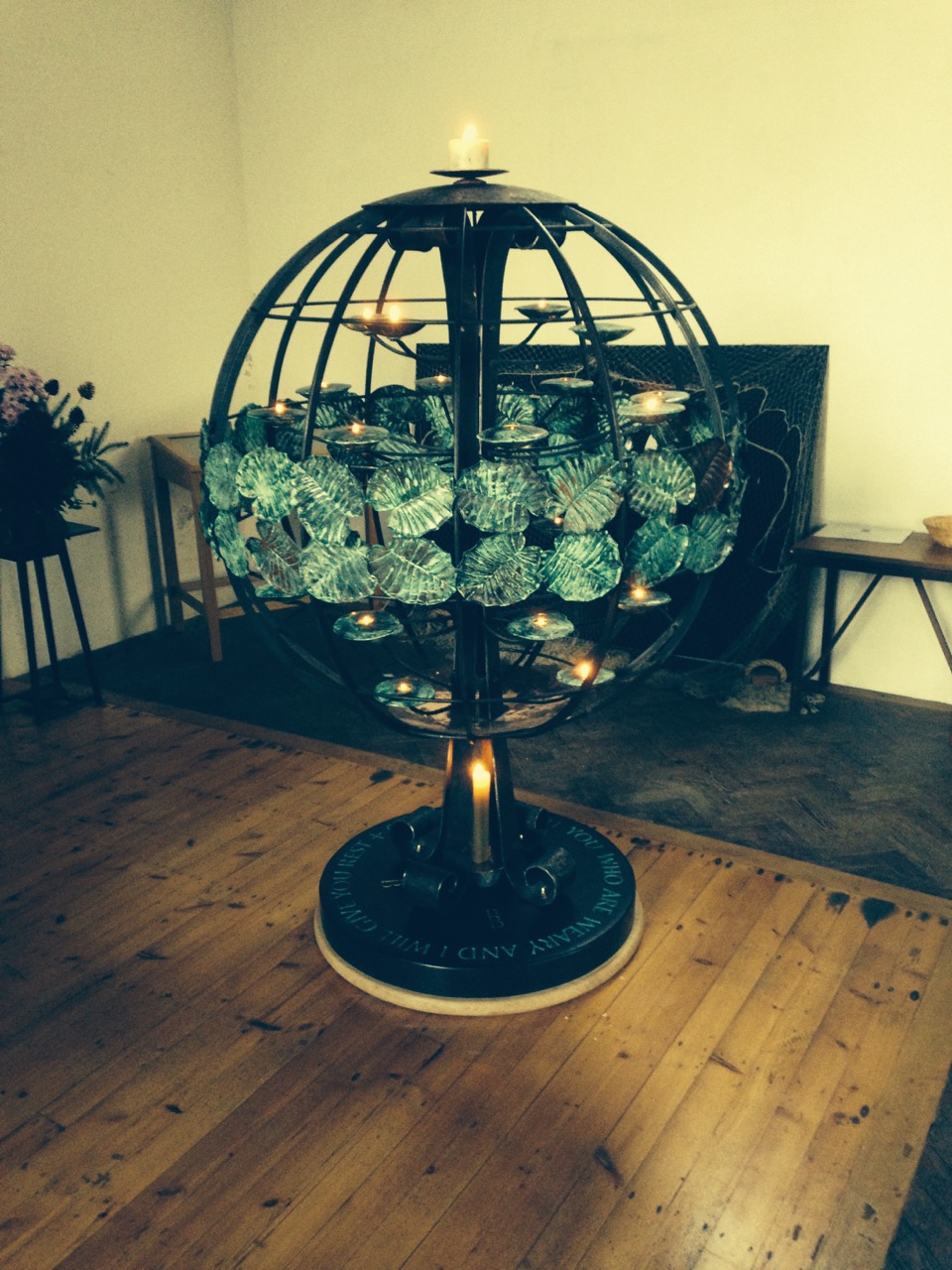
This Votive candelabra for Wayboune Church in Norfolk was created by Brian Turner of Turner's Ornamental Leadwork. It was a change from the normal lead work they are commissioned to produce, examples of which can be seen on the website at www.turners-lead-collection.co.uk
In a special focus on the region, Ecclesiastical and Heritage World will be telling the story of how East Anglia became the place it is today. We will be looking at the main heritage sites and ecclesiastical marvels, both ancient and more modern – from the 12th-century edifice at Ely to the 20th-century neo-Romanesque Catholic Cathedral of Norwich.
There will be editorial input from the East of England Dioceses, the two cathedrals of Norwich on their restoration programme as well as other church and heritage organisations such as the Norfolk Preservation Trust, the East of England branch of English Heritage and the National Trust.
We will also be profiling some of craftspeople and specialists who work to preserve that rich heritage: specialists in restoration, engineering work and even decorative stone and ironwork.
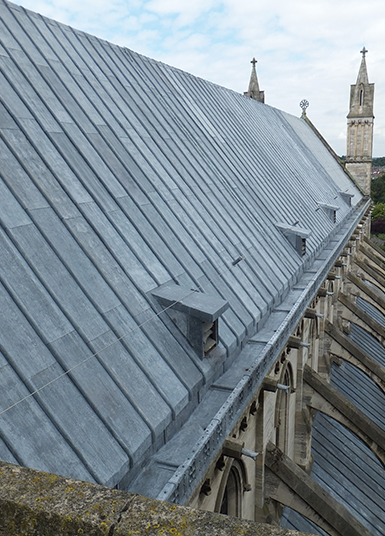
Roof repairs correct century-old ‘mistakes’
The front cover of the issue will feature the re-roofing of the Cathedral of St John the Baptist in Norwich, one of the best examples of the Victorian Gothic revival in the country.
Norfolk Sheet Lead (UK) Ltd were appointed as main contractors to oversee the final and most visual phase of the work which has been undertaken over the past 40 years.
The company expressed themselves immensely proud to be involved in the project, which has been entered into the Lead Contractors Association's Murdoch Award.
One of our contributors to the East Anglia spotlight will be Suffolk based Simon Swann Associates, a small conservation practice working in East Anglia with specialist knowledge of the area and the local materials used in construction.
The director, Simon Swann, is an accredited conservator with over 20 years experience in the conservation of historic buildings. Unlike the directors of larger companies, Simon's role as the principal accredited conservator allows him to carry out both condition assessments and the on-site conservation works required. This ensures a high quality of work, continuity and the flexibility for projects to be adjusted easily as conditions dictate.
The practice uses local craftspeople and supports training with internships and apprentices whenever possible.
Simon Swann Associates was established in 1995, becoming a limited company in 2009. In recent years the practice has grown considerably, while retaining the considerable benefits of being a small specialist practice.
Simon Swann is an accredited conservator (ACR) having achieved accredited status with the Institute of Conservation (ICON). The practice is listed on the conservation register. Prior to working independently in East Anglia in 1995, Simon worked for several national conservation firms including Cliveden Conservation, St Blaise and Induni Conservation. During the early 1990s he worked on projects at Chastleton House (Long Gallery ceiling), Stowe Landscape Gardens (Temple of Venus and several other temples). Simon has also worked in France and carried out short contracts in Europe and the Republic of Ireland.
Below are just a few of examples of his highly skilled conservation projects - others can be found at www.swannassociates.co.uk
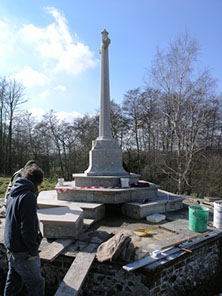
Shotesham War Memorial (Nr Norwich). Works included cleaning stonework, stone indent repair, stone replacement, new letter cutting, and pointing.
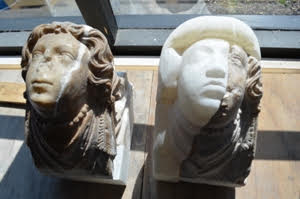
Conserving the corbel stones to the alabaster Briant Darcie Monument (d. 1587) in St Osyth Church, Essex.

Repairs and conservation of Parker’s Roman Cement Niches (hoods and linings) and hood moulds and other early cement detailing at Hainford Church, Norfolk.
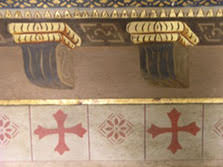
Consolidation of surface paint and plasterwork at Watton Church, Norfolk.
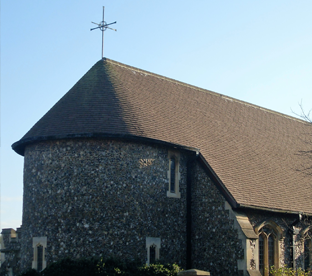
Aldeburgh Church gets a new roof
The Church of Our Lady and St Peter in Aldeburgh, Suffolk sits on a hill top with stunning views of the coast below. It was built in the style of the 40-odd round towered medieval churches that you find in the county, particularly along the coast.
Recently, the tiling on the roof was failing and the re-roofing project was carried out by 3A Roofing Ltd, a family owned company based in Copdock, near Ipswich, who replaced the existing tiles with new Sandtoft hand made, clay plain tiles. The effect, as you can see, was stunning in spite of the challenge of the unusual shape of the church.
For further information visit www.ipswichroofing.co.uk

Lime mortars give protection to Kent and Caen stone
All Saints’ Church in Laxfield is a classic Suffolk wool church, with a long, wide nave and a superb west tower dating from the mid 15th century.
There have been long-standing problems with stone decay and Skillington Workshop Ltd, specialist stone and plaster conservators based at Grantham in Lincolnshire, were brought in by the church’s architect carry out repair works.
The completed project has left the tower in good order for many years to come and has won many plaudits – not least for the success achieved using lime mortars – and it was shortlisted for the 2016 SPAB John Betjeman awards.
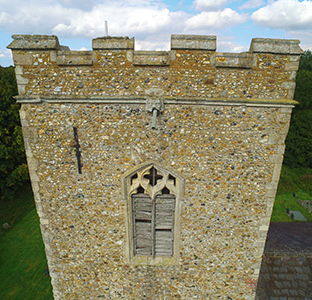
To access all areas, take the aerial route
East Anglia is home to some of the most precious ancient churches in England – a good number of which date from the Saxon period. It is no surprise, therefore, that some of the most innovative methods for ensuring their continued good condition are to be found there.
One deployment of modern technology is the use of unmanned aerial vehicles (UAVs), or drones, to overfly sites in need of examination.
One of the leaders in the field of the use of UAVs in church surveys in East Anglia is Spatial Photography of Thursford in Norfolk.
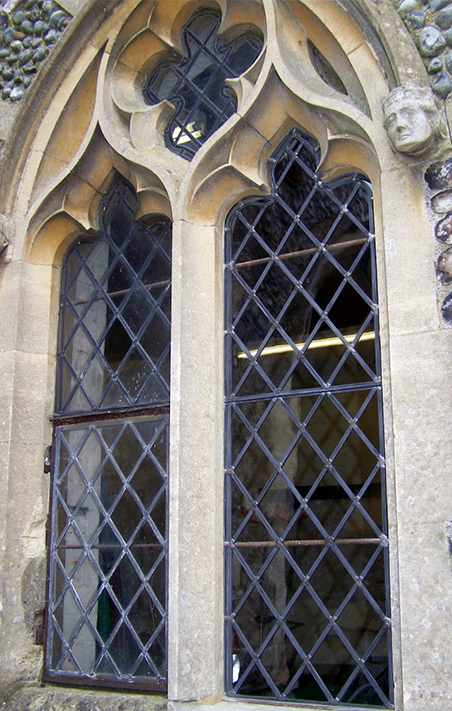
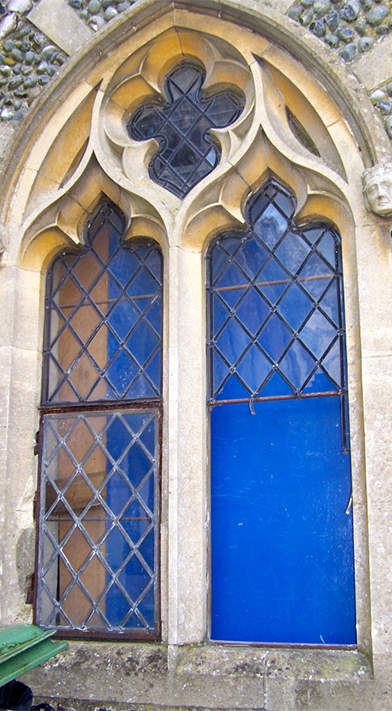
Kenton Brauer - Stained Glass & Casements
The leaded lights in this church at Diss, Norfolk are pictured before (left) after vandalism and (right) once fully restored by Norwich based Kenton Brauer.
The company craft and restore traditional & contemporary stained glass & casements for ecclesiastical, commercial & domestic commissions. They also undertake repair work on various types of glass & timber casements.
They now live and work from the original Norfolk Stained Glass Company premises and have recently taken over the 27-year-old family run business due the retirement of Michael Wiley (A.C.R, ICON). He oversees all of Kenton Brauer’s work to ensure a consistent high quality of craftsmanship.
Their benevolent services are on offer at www.kentonbrauer.com
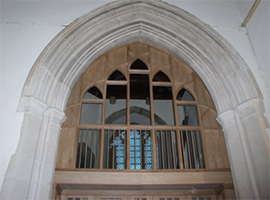
Bespoke joinery for your church or listed building
This gothic arched oak frame was created for Little Gransden Church in Cambridgeshire by Chris Downes of Amulet Joinery. Based in the market town of March in the Isle of Ely, the company specialise in bespoke joinery for churches, listed buildings, contemporary homes or indeed any development.
All work is handmade using traditional joinery techniques and Chris accepts the more unusual commissions such as bespoke commemoration pieces.
More examples of work by Chris can be found on his website at www.amuletjoinery.co.uk
David Bartram Furniture was established in 1981 and is based in the UK at Heckingham, near Norwich, Norfolk. The company has an extensive range of skills and experience in bespoke joinery, building interiors, and the design and manufacture of fine furniture.
Regarding their many church projects, proprietor David Bartram said: "Working and making fitments for church interiors is a joy. We take great pride in knowing that our work is in a public space and will be there for centuries to come. We liaise closely with architects and other conservation professionals to make high quality pieces that blend into the fabric of the building."
Conservation work is also undertaken to preserve or repair existing fitments or artifacts within ecclesiastical premises.
A number of the company's ecclesiastical projects are pictured below:
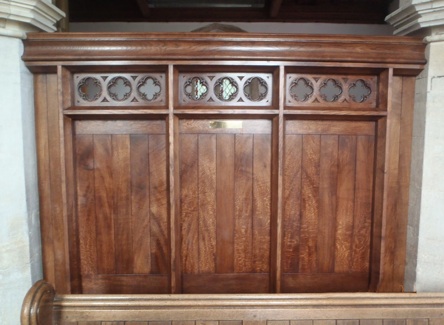
Oak screen for church at Burnham Market.
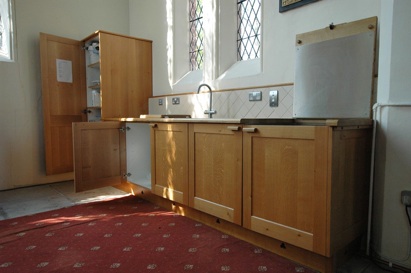
Oak kitchenette at Hainford Church.
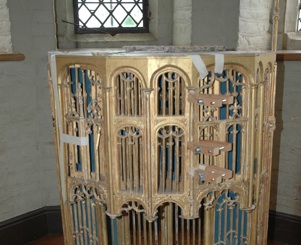
Tabernacle repair at Oxburgh Hall.
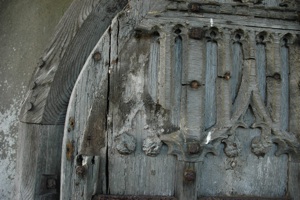
Conservation of church door at Melford Hall
For further information visit www.davidbartramfurniture.co.uk
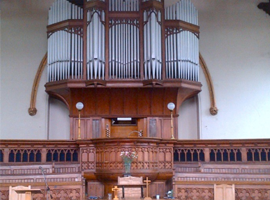
The history of London and Ipswich based organ builders Bishop and Sons
This 1909 Bishop Organ in St Clement's Congregational Church, Ipswich was built by Bishop and Sons Organ Builders. The company were established way back in 1795 and, as well as their London head office, they also have a busy branch in Ipswich.
The company has 200 years plus of tradition and experience in the art of organbuilding, restoring and maintaining organs of all sizes and varieties.
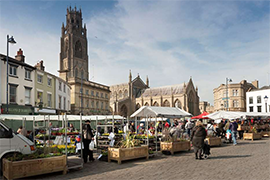
Historic England helps Boston build on its past
By raising awareness of Boston's historic significance and encouraging investment in a series of conservation projects, Historic England has helped this Lincolnshire town to capitalise on its past.
Boston reached its zenith in the medieval period when it was the second busiest port in Britain, but decreasing wool exports led to its decline.
When renovating any church or historic building, it will benefit from The Limecrete Company’s use of modern, breathable, self-insulating and sustainable construction materials.
Based in Norfolk, The Limecrete Company Ltd was established in 2006 when Myles and Louisa Yallop, concerned with the environmental impact of their civil engineering firm, made the decision to move away from conventional construction methods. Myles Yallop says: “We had to stop burning diesel and throwing concrete in the ground for a living."
Myles developed a highly efficient mixer ‘The Big Green Limecrete Machine’ which eliminated the problems associated with limecrete when it is mixed in a drum mixer, too much water is added or when jobs are carried out laboriously slowly. The firm follows the system developed by Ty-Mawr Lime Ltd, which is highly insulating and has LABC approval, with great results.
The company was appealed to by customers impressed with their professional and effective approach to limecrete who were looking for a better method of mixing large quantities of hempcrete. After an intense period of research and development, Myles came up trumps again with his specially modified mixer and in 2012, having kept his eye on technological advances on the continent, The Limecrete Company have invested in the latest hemp spraying machine to reduce the water content and increase efficiency.
The photos below are of a limecrete floor project at Chrishal Church near Duxford for Lodge and Sons which they completed just before Christmas last year.
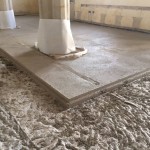
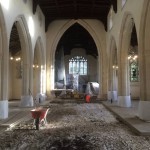
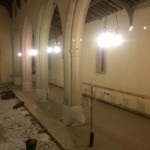
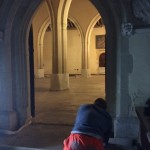
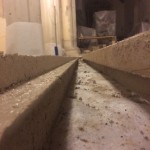
For further information on the company visit www.limecrete.co.uk
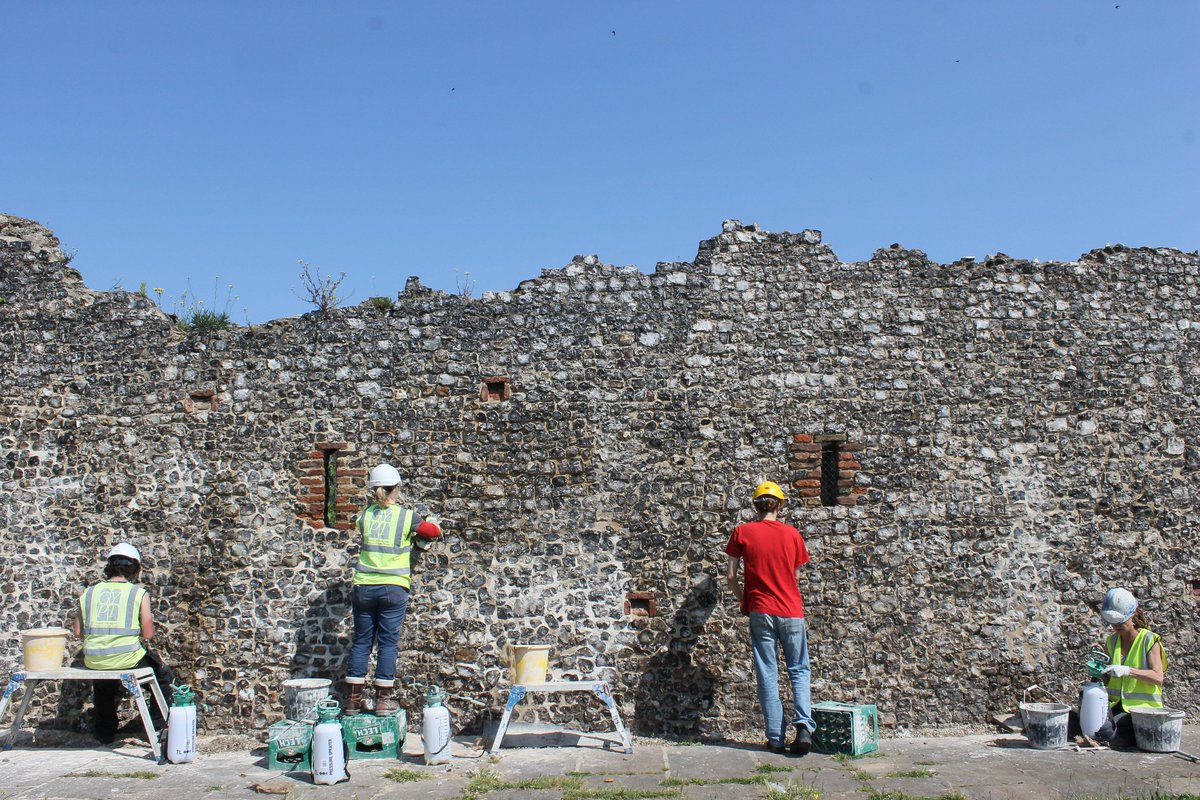
Norfolk Conservation aims to turn the tide at seaside town
Popular perceptions of Great Yarmouth are that of a one-dimensional, kitsch and deprived seaside holiday resort. Images of low-value amusement parks, gaudy slot arcades, and penurious society are likely to surface. True, Great Yarmouth suffers from economic deprivation and hardship. One can see it in the buildings, street and faces. However, it is also fair to presume that this perception too is deprived and one-dimensional.
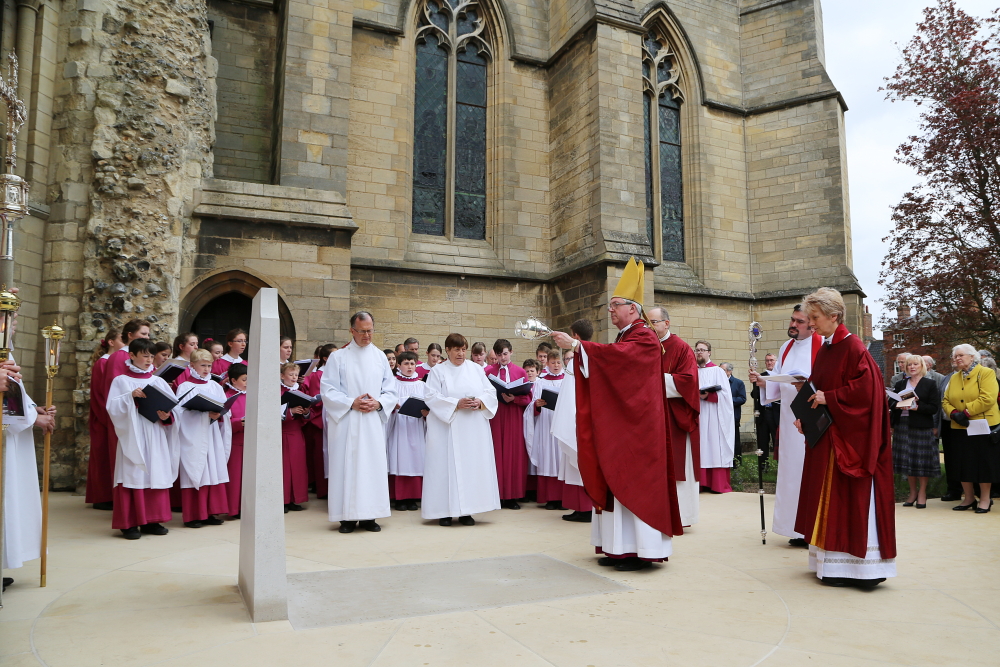
Edith Cavell's new grave dedicated at Norwich Cathedral
A poignant service was held at Norwich Cathedral on Sunday 15 May, when the new grave of executed First World War nurse, Edith Cavell, was blessed and dedicated.
Edith, who was born in Swardeston in Norfolk, was executed by a German firing squad on October 12, 1915, after helping Allied prisoners escape to Holland.
Based in Bury St Edmunds, Rickards Period Plastering provides a professional application of traditional plastering techniques throughout the county. Whether working within the precious historic environment or on a unique architecturally designed new build they endeavour to provide a skill set and finished product of the highest quality.
Mike Rickards is from a previous restoration background and established the company in April 2012 and his experience has been built upon undertaking the projects that others may shy away from - whether due to material use, design, access or other site specific challenges. He says: "We enjoy the challenge and relish the unique and unusual projects so that, when finished, we can take a step back and say....’we did that’.
"The establishment of Rickards Period Plastering Ltd allowed us to expand our traditional skill set as an experienced exponent of the vernacular haired chalk mix along with the innovative and pioneering approach extending into the eco market where modern and unique building materials, such as wood fibre insulation board and hemp construction, require a similar sympathetic approach.
"Our extensive knowledge of local construction and the built environment, along with familiarity of the complexities of period property housing, means we can provide appropriate material applications for the delicate building fabric and unique build materials of East Anglia - whether these are timber frame, clay construction, hemp, flint or soft red brickwork.
"Through the many contacts built up over the years, we have a network of capable trade professionals including framers, carpenters, decorators, masons and bricklayers able to complement a project's requirements."
The pictures below are of the Grade 1 listed St Mary's Church at Bury St Edmunds where the company undertook plaster repairs, following relocation of the Suffolk Regiment memorials, for Universal Stone.
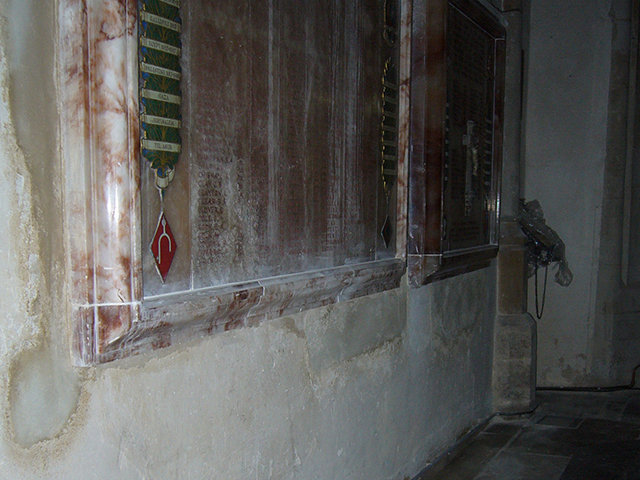
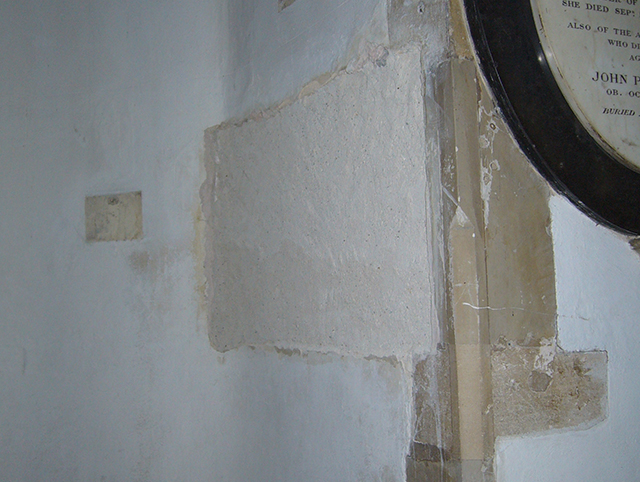

For further information and details of other projects visit the website at www.period-plastering.co.uk
Also featured in the magazine will be the recent work on All Saints Church in Laxfield, Suffolk by Skillington Workshop Ltd. In the meantime we can take a look at one of their Lincolnshire conservation projects at Stoke Rochford Hall.
South Lodge at Stoke Rochford Hall, Lincolnshire, was built in 1834 adjacent to the new main entrance to the park, designed by the Grantham architect Cornelius Sherborne, and built out of local Ancaster Hard White limestone. As part of a refurbishment programme by Stoke Rochford Estates, Skillingtons were asked to advise on how best to repair the columns supporting the projecting gable. These had deteriorated badly at low level, together with their bases, due to soluble salts and damp.
After consultation with all parties, including the Conservation Officer, it was agreed to replace the lower half of each column and its base. This was quite a tricky operation due to the need to provide temporary support to the gable above, and the desire to achieve a very tight and almost invisible joint in the column shafts.
At the same time Skillingtons carried out numerous masonry repairs to the walls and copings of the Lodge, re-pointed where necessary in lime mortar, and carried out a light general clean using the DOFF machine - a high pressure superheated steam cleaner - and more localised cleaning to remove heavier deposits using a TORC machine - a wet abrasive system, highly controllable and very sensitive, using a calcium carbonate granulate directed at the masonry in a swirling vortex so as to make contact at a tight angle rather than straight on.
As can be seen from the photos below the result was a great success.
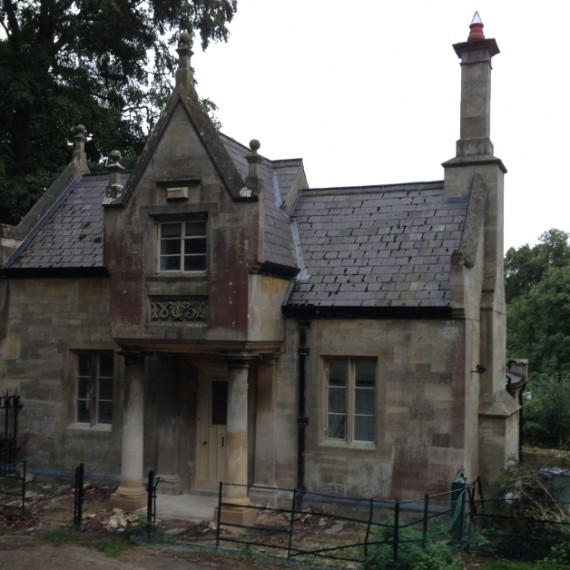
Stoke Rochford South Lodge with columns repaired
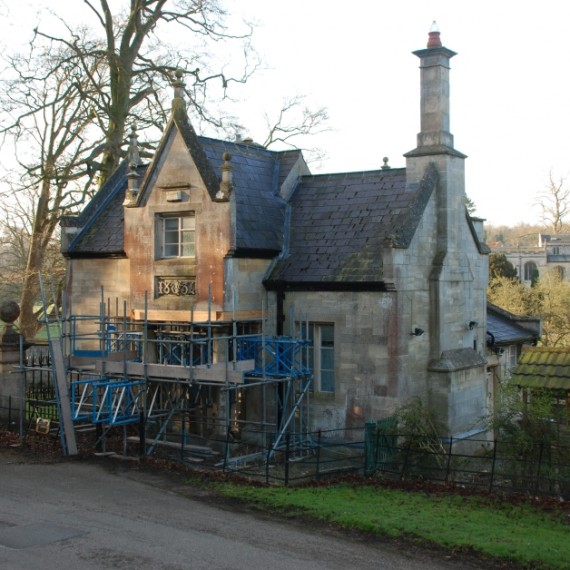
Stoke Rochford South Lodge with propping to porch
For further information visit www.skillingtons.co.uk
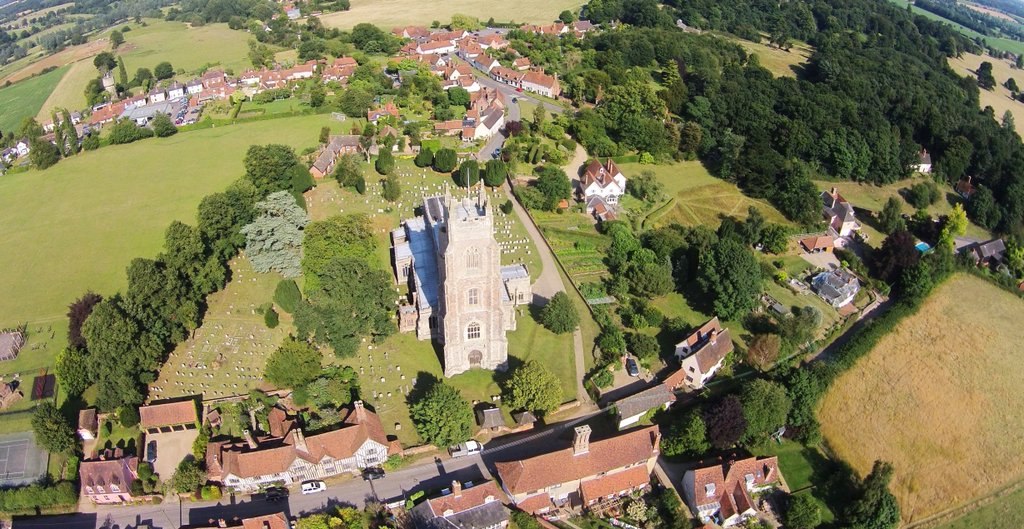 The Diocese of St Edmundsbury and Ipswich offer guidance on their website on how best churches in the diocese should be repaired and developed.
The Diocese of St Edmundsbury and Ipswich offer guidance on their website on how best churches in the diocese should be repaired and developed.
They say: "The majority of the churches in our diocese are medieval and these do not react well to modern building materials such as cement and emulsion paint. It is therefore important to use the correct materials and methods for a repair and ideally employ an architect or surveyor with relevant experience.
"Your architect or surveyor should produce a specification and schedule of works which describes the repair and details the materials to be used. The DAC will want to see this. It is likely the archdeacon will be able to authorise the repair without the need for a faculty but the paperwork will have to be seen by a DAC representative, a process which should take around four weeks.
 "Churches do develop over time and they need to change to accommodate new needs or liturgical practice. However, PCCs need to make the case for such changes and this is done through the production of a Statement of Needs and a Statement of Significance.
"Churches do develop over time and they need to change to accommodate new needs or liturgical practice. However, PCCs need to make the case for such changes and this is done through the production of a Statement of Needs and a Statement of Significance.
"The DAC may wish to visit the church to discuss your plans in the context of the building. Draft Statements are useful tools to prepare the DAC for the visit. The DAC may want other organisations to be part of the visit as they will have a say in allowing the works to proceed. Groups such as Historic England, the SPAB, the Victorian Society and the national Church Buildings Council won’t attend a site visit until they have seen your draft Statements."
James Halsall is Secretary of the Diocesan Advisory Committee for the Care of Churches and is one of the most experienced professionals supporting church buildings nationally. He is the author of Caring for your Church Building - an accessible, comprehensive book and an invaluable aid to getting the balance right between making buildings fit for mission and worship and community use while respecting their heritage.
To find out more about the diocese visit www.cofesuffolk.org















